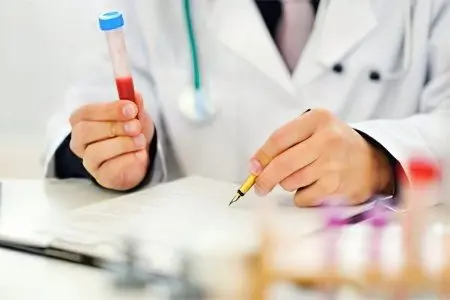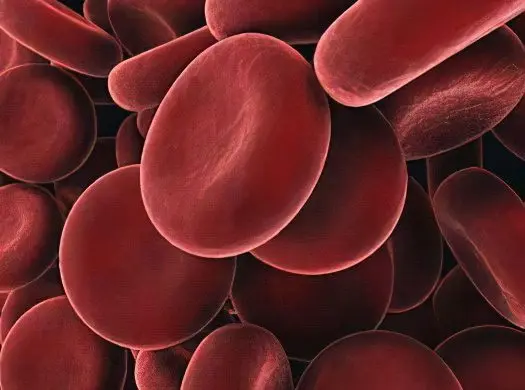Contents
Why do people have low hemoglobin levels? Why pharmaceutical preparations do not always help, and sometimes even harmful, and how to avoid it? How to easily increase hemoglobin at home? You will learn all this in this article.
Symptoms of low hemoglobin
How can a person determine a decrease in hemoglobin? First of all, this is the presence of asthenic symptoms: the patient feels general weakness, quickly gets tired, he has drowsiness, dizziness, headaches, palpitations and blood pressure (low) are possible. In severe cases, patients may experience fainting.
When a decrease in hemoglobin is a consequence of a lack of iron in the body, dystrophic symptoms are noted: the skin is dry, cracks form in the corners of the mouth, nails and hair become brittle, fall out, and slowly grow back. There may be disturbances in smell and taste.
Predominantly low hemoglobin is a sign of a disease. The most common of them:

chronic iron deficiency anemia;
blood loss;
thinning of the gastric mucosa (chronic atrophic gastritis);
inflammatory bowel disease, dysbacteriosis (chronic enteritis);
iron deficiency anemia after surgery;
autoimmune diseases (lupus, glomerulonephritis, rheumatoid arthritis);
long-term infectious diseases (hepatitis, gastroenterocolitis, tuberculosis, pneumonia, inflammation of the kidneys, etc.);
malignant pathologies of the blood;
malignant tumor lesions, especially of the gastrointestinal tract.
Determination of hemoglobin
Hemoglobin is a complex combination of iron and protein. It is found in erythrocytes – red blood cells. Hemoglobin performs the most important function for the body – the transfer of oxygen molecules to all organs and tissues. It captures oxygen in the lungs and conducts further oxidation, transferring it to all necessary structures. Oxygen is necessary for the body to ensure life, receive and exchange energy and carry out recovery reactions.
To produce hemoglobin, you need to eat iron-rich foods. It is also important that iron is normally absorbed in the small intestine. The content of B vitamins in food, especially vitamin B12 and folic acid, is extremely important. It is also important that there are no pathological changes in the blood, that is, acquired or hereditary blood diseases.
Normally, the amount of hemoglobin in the blood of men is 130-160 g / l, in women – 120-147 g / l. In pregnant women, the lower limit of the hemoglobin norm is reduced to 110 g / l.
How much hemoglobin should be?

For the norm of hemoglobin, values uXNUMXbuXNUMXbare taken, different in age, gender and other characteristics of a person.
Hemoglobin is calculated in grams per liter (g/l). For an adult male, 130-170 g/l is normal, while for a woman it is 120-155 g/l. This difference is due to the fact that men have a higher concentration of androgens (a special group of steroid hormones) that stimulate the formation of red blood cells. For pregnant women, normal hemoglobin limits drop to 110-140 g/L as the body begins to use iron more actively.
In people under 18 years of age, the hemoglobin norm is delimited by age and does not depend on gender. In the first two weeks of life, hemoglobin is considered normal 135-195 g / l, then this figure decreases to 125-165 g / l, and by one year it reaches 110-130 g / l. After that, the hemoglobin level gradually increases by about 1-3 g / l per year (both in the lower and upper limits). For example, by school age (6-7 years old) it reaches 115-135 g/l, and by 13-14 years old – 120-145 g/l.
A blood test can show a deviation in the concentration of hemoglobin, not only with metabolic disorders and various diseases, but also for other reasons. This is the use on this day or on the eve of fatty, fried, alcohol, excessive mental or physical exertion, taking certain medications, smoking before analysis.
Many people have low hemoglobin, which in 90% of cases is associated with iron deficiency anemia. This syndrome is characteristic of approximately 30% of the population of the entire planet, especially for children and women.
Why is low hemoglobin dangerous?
With a decrease in hemoglobin due to iron deficiency anemia, a lot of symptoms can appear. This weakness, malaise, decreased performance, dizziness. Often there is shortness of breath, heart rate increases, taste and smell are distorted, dryness appears in the mouth, and the tongue begins to tingle.
Among the external signs of anemia, dryness and thinning of hair, pallor and peeling of the skin and lips, brittleness and loss of luster of nails can be observed. Women may experience burning or itching of the genital (external) organs. With a strong decrease in hemoglobin, fainting and dizziness begin, constant headache, rapid fatigue, attention is disturbed. Muscle relaxation is often observed, which sometimes leads to urinary incontinence.
If hemoglobin is below normal, then there are malfunctions in the immune system. This can lead to complications in any disease, even if it is an elementary cold.
Decreased hemoglobin is a common occurrence for most pregnant women. A strong deviation from the norm affects the health of both the woman herself and the child she is carrying. In women, there are complications such as uterine hypotension, improper location of the placenta, hypoxia, delay or cessation of fetal development. A born child may have low weight, underdevelopment, disorders of the respiratory and nervous systems, subsequent deviations in mental and physical development, atrophy of muscles and organs.
If hemoglobin in anemia is slightly reduced, then the problem can be solved by taking vitamins and changing your diet. It should contain meat and offal, fish, pomegranates, buckwheat, apples and freshly squeezed juices. By the way, it is precisely because of the lack of meat and offal in the diet that vegetarians often have low hemoglobin. More serious deviations from the norm are already resolved at the medical level.
Often, a decrease in hemoglobin indicates the presence of a disease or other disorder in the body. It can be an infection, a hereditary pathology, a violation of hemoglobin synthesis, hemoglobin can decrease due to blood loss, and not only obvious, but also hidden, for example, with certain diseases of the stomach or intestines, uterine fibroids, ovarian cysts.
In any case, with a decrease in hemoglobin from the norm, you need to change your diet, and with a large deviation, you should visit a specialist – a hematologist.
Iron absorption, what’s the catch?

So why, when taking iron in addition inside, we in most cases do not achieve results?
Most drugs designed to replenish iron in the body are in the form of ferric iron. Unfortunately, this form is very indigestible and is more likely to cause constipation and heaviness in the stomach than help with this problem. The body absorbs only ferrous iron, but such a drug is much more difficult to find.
The second reason for low iron absorption lies in casein. All dairy products contain a special protein – casein. It sticks together with iron and does not allow it to be absorbed and is simply excreted from the body. Therefore, another important condition is that all dairy products (milk, cottage cheese, sour cream, yogurt, cream, fermented baked milk, including fermented milk products) must be excluded from the diet, at least not consumed within 5 hours before and after taking iron (if talk about pharmaceuticals).
Thirdly, if you have a low acidity of the stomach, then iron will be less absorbed. And the lower it is, the worse the effect will be!
There is one more important thing: if you have a severely reduced iron, then first of all it will accumulate in the liver, and only then it will appear in the blood, so it should be consumed from 1-2 months to six months.
Causes of low hemoglobin
The body can lose hemoglobin for various reasons. This happens most quickly with blood loss – both explicit and hidden. Explicit bleeding occurs with heavy and prolonged menstruation in women (more than five days), hemorrhoids, various injuries, injuries or operations.
Latent bleeding is possible with some gastrointestinal diseases, pathologies of the female reproductive system (ovarian cyst, uterine fibroids, etc.). Autoimmune diseases, infections or hereditary diseases can lead to a decrease in hemoglobin and a short life of red blood cells.
Also, low hemoglobin is noted in blood donors (with systematic, personnel donation). In children, low hemoglobin may be the result of an unbalanced diet, poor in vitamins and minerals necessary for the body.
How to replenish iron levels and increase hemoglobin?
Probably everyone has heard that black caviar increases hemoglobin. Yes, it can even raise hemoglobin in one day, but not everyone can afford it, not to mention the fact that you can’t just buy it on the market, since its sale is prohibited. Sale of black caviar is carried out only through retail chain stores.
There are more affordable options as well. Dried fruits contain much more iron than fresh fruits, so you can easily make a “concentrate” at home.
Mix dried apricots (or dried apricots), raisins (you can add prunes), walnuts, lemon and honey. In a meat grinder or in a combine, grind everything into a homogeneous mixture. Take a teaspoon 3 times a day before meals.
It will not be superfluous to drink rosehip infusion instead of tea, which also contains a lot of iron, not to mention the fact that rosehip is the record holder for vitamin C content. And vitamin C improves the absorption of iron by an order of magnitude, as does calcium in ionic form (but not dairy products !)
Be sure to eat pomegranates every day, you can make juice from them. Despite the fact that they are low in iron, it is completely absorbed by the body. And thanks to the huge amount of other useful substances, it will be easier for the body to rise to its feet.
If you are a juice lover, then focus on green apple juice and pumpkin juice.









